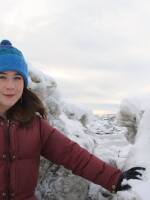After a couple of record breaking years in Bristol Bay, the Alaska Department of Fish and Game is forecasting the 2019 sockeye salmon season will be slightly below the 10-year-average and slightly above the long-term average.
When Bristol Bay rivers run red this summer, it will be with 40.2 million sockeye salmon, according to the Alaska Department of Fish and Game’s forecast.
“If there was a theme song or a bullet point for this year, it would be kind of a return to normal,” said Greg Buck, the Bristol Bay area research biologist. “You know, we’ve been on something of a sugar high the last couple of years.”
If the forecast is correct, the total run would be 10 percent below the most recent 10-year average of 44.4 million reds, but it would still come in well above the long-term average of 34 million fish.
The rivers that are likely to see the most striking drop this year from the past two years are the Nushagak and the Wood. The Nushagak District as a whole is forecasted to see 10.3 million reds return with 4.2 million to the Nushagak River and 4.6 million to the Wood River. Compare that to last year’s total run of 33.5 million sockeye to the district.

ADF&G is predicting that the Naknek-Kvichak run at 16.1 million reds will be similar to last year’s. It is forecasting larger runs to Egegik and Ugashik at 9.1 million and 3.5 million respectively.
Togiak is also forecasted to have a strong summer with 1.2 million sockeye returning.
“I don’t think I’ve ever seen a forecast for Togiak that was above a million, so I’m pretty excited about that as well,” said Sands.
Forecasting salmon returns in Bristol Bay is notoriously difficult. Biologists said that some unexpected variability in the age classes of fish that returned in 2018 made it especially tough to pin down the Nushagak District forecast for 2019.
According to the forecast, “Evidence regarding the strength of the 2015 brood year in the Nushgak District is mixed with a very high level of jacks (age-1.1 fish) in the Nushagak River and a very low level of jacks in the Wood River 2018 return.”
Sands also said that in 2018 the Wood River saw an unusual number of 2.1’s, fish that spent two years in freshwater and one years in saltwater. That, in combination with last year’s incredibly large return of 1.2’s to the river, suggest to Sands that it is possible 2.2’s could make a showing in the Wood River this year.
“And we don’t normally see 2.2’s, but there’s a possibility of that being a much bigger number than we’ve seen historically,” said Sands, illustrating the difficulty of using data from recent returns to model the 2019 forecast.
According to Sands, the forecast is conservative in its estimated return to the Nushagak District.
Buck is more confident in the forecasts for Bristol Bay’s east side districts.
“You don’t see any brood tables over there that really make you scratch your head. If you look at all the models, there seems to be an answer that makes sense,” said Buck.
He notes that, on average, forecasts since 2001 have been under forecast by an 11 percent.
Contact the author at avery@kdlg.org or 907-842-2200.





